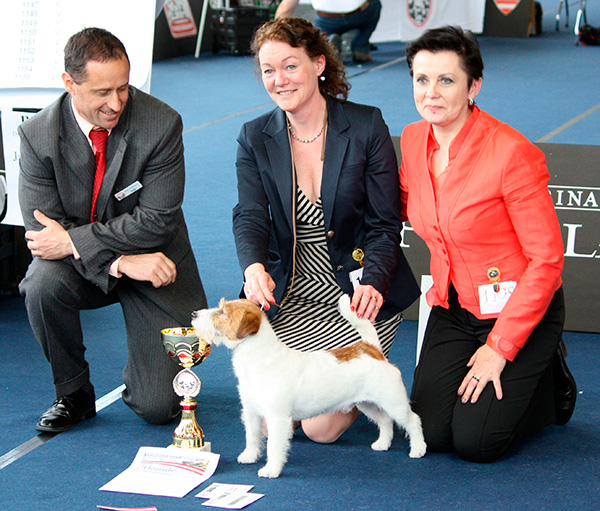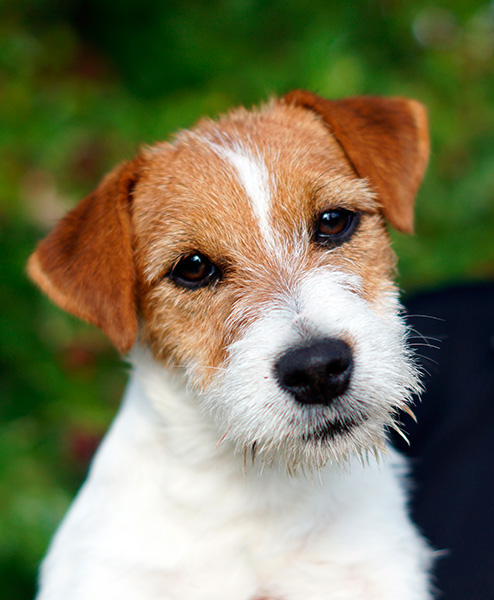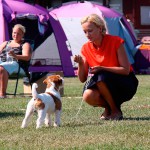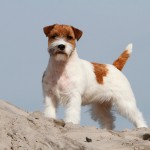Saltisgardens Jack Russell Terriers
Interview with Mrs. Ingrid Saltzman • Interviewed by Jovana Danilovic
Published in Best in Show Summer 2014
BIS: When and how did you first come across Jack Russells?
I.S.: My first interest in this breed was because of its hunting skills. This was way before the breed’s recognition in FCI. Jack Russells are wonderful workers, they are enthusiastic and tireless.
BIS: What makes the Jack Russells so special for you?
I.S.: Their mentality! You can’t have a bad day with Jack Russells around! It’s like waking up every day shouting “YES!! A new day!!”

BIS: Which dog do you consider the foundation of your breeding program?
I.S.: A Swedish bitch that was registered when the assessments started in Sweden in 2002. She wasn’t perfect in any way, but she had some genuinely good points – besides her mentality, which actually was perfect! Today I have a young girl who is the 6th generation female descendant. Champions, World Winners and hunting champions can be found in the generations down the line.
BIS: What do you consider your greatest achievement as a breeder?
I.S.: I cannot rate the biggest achievement, but I have some highlights that I’m very proud of. Being awarded the Breeder’s Medal of the Swedish Terrier Club is a huge honor, being awarded the Breeder’s Working award of the Swedish Kennel club makes me proud and thankful to all who helped and trained their dogs for hunting. Of course I’m very proud of my World Winners; Rocket Man being Junior World Winner in 2006, Shakespeare being Junior World Winner and as icing on the cake also was BOB in 2008, Knäckehäxa being World Winner in 2010, and Shakespeare again being World Winner in 2012. I am proud of the success my dogs are having in the capable hands of their owners in lots of countries. I’m proud to see my dogs in the pedigree of winners, but I’m also equally proud to have great ambassadors of the breed in families. These little heroes are not seen in ads or shows, but they do a great job showing people what a wonderful breed the Jack Russell is! It’s very rewarding when owners tell me they get approached by strangers recognizing their dog as a Saltisgarden dog.
BIS: Who has been your greatest influence in breeding and in what way?
I.S.: Lots of other breeders who have stayed true to their breeds’ origins, and have a genuine interest in their breeds.
BIS: Did you have a mentor when you first started out, who was that and in which way did that person help you?
I.S.: Many people have helped and inspired me in many ways, but I must point out Mrs Lilian Jonsson, a judge and a successful breeder of English Cocker Spaniels and Welsh Springer Spaniels under the prefix Bonnets. Lilian lived close to me and really took me under her wings when I was new to all this. She guided me through the skills and the thrills of showing, she helped me evaluate, etc. I could always call her. Francesca Cassin (professional handler) has been a wonderful help in the art of showing, and also a very good friend
BIS: Are there any other people who have been instrumental in your career as a breeder that you have looked up to and admired?
I.S.: When it comes to hunting I’ve had great help of Heinz Hansson of Schoone’s kennel (Parson), Carl-Göran Wingårdh of Quorum’s kennel (Kleiner Münsterländer) and Cid Malmros of Tyja’s kennel (German Hunting Terrier). Regarding the art of grooming, I learned from a very experienced groomer, Mrs Gertrud Hagström (Merrymac Kennel, Irish terrier and Jack Russells). I invited her to have a grooming seminar and learned the basics. After that I trimmed all JRTs I could find, I literally asked people in the streets if I could groom their dogs, I practiced and practiced on different coats for a long time. I learned a lot, and still do. To me, the keyword is “weatherproof”, and grooming is my quality time with my dogs.
BIS: How did the Jack Russells change over time since you first got involved with the breed?
I.S.: Trends and fashion come and go, also in dog breeding, but I think the breed is a bit more uniform today. I think we’ve managed to polish the worst rough edges off, but there is still a long way to go. The breed having been so popular has in fact been a delaying factor for progress. Lots of litters have been born with little or no regard to quality. Many people wanted a Jack Russell, and everything was “sellable”. No breed benefits from being too popular.
BIS: Are there any specific stud dogs/brood bitches in your variety, in your country, or globally, that you think have had an important impact on your variety and if so, why?
I.S.: I’ve got to mention PG (Björsätters Peer Gynt), not only a wonderful dog himself, but also a very successful reproducer. I wouldn’t want to miss any dog I’ve used down the line though. No dog can have it all, but you get bits and pieces from them all and they have all added some good features. I must say I’ve had the fortune of being able to use some of the world’s most fabulous lines in my breeding, with many thanks to Pam Sullivan (Baylock), Fay Foster (Inverbrae), Lynn Revill (Otwaymist) and Lynette Brown (Macbraedly), all in Australia. I am also forever thankful to Jane Keeping for letting me lease her gorgeous boy, Kyduke Blitzen.

BIS: Is there something which you would like to change/improve in the breed?
I.S.: We are not here to change the breed, we have the humble mission of preserving the breed as it was intended, and as the breed standard clearly describes.
BIS: Every breed has some common problems. Which is the most common problem in your variety seen from a breeder’s point of view?
I.S.: I think it’s the inconsistency. With a 5,5 cm height range, there will always be a certain variety in terms of size. Several colors and three different coat types don’t make uniformity any easier.
BIS: What is your opinion regarding too heavy and round shaped chest?
I.S.: That is simply not what the breed standard calls for. If we stop reading the standard, we will start accepting faults like that. One day we will see the breed changed into something completely different.
BIS: What has been the biggest disappointment in breeding and showing for you so far?
I.S.: If I get disappointed, then my expectations were too high.
BIS: What do you think is the most problematic about the Jack Russell FCI or AKC Standard?
I.S.: I think the part about grooming is a bit unclear. Some choose to interpret it as no grooming is required, but the keyword is weatherproof. An unaltered rough coat is not weatherproof. The part about how to measure the slightly longer than tall is a bit problematic. “Slightly” is not an exact measure, and from the withers to the root of the tail being longer than the height, may give a very long dog. Some want the whole body to be longer than tall, which gives a shorter dog. The overall dog should be longer than tall, I think most people have an eye for it without measuring.
BIS: Please mention 2 to 3 Jack Russell which are not owned, bred or shown by yourself, that you particularly admired, and tell us what you most admired about each.
I.S.: In my opinion, the female World Winner in 2012, Jessica Hradu Pihlov, as well as the female winner this year, Jackobean La Scuola De’ Gelosi, are both stunningly beautiful Jack Russells. Well balanced, harmony!
BIS: What qualities do you admire most in a judge?
I.S.: The very important proportions, the 50/50-leg/body-ratio and the height/length-ratio
BIS: What are the most important characteristics to keep in mind for anyone wanting to become a good Jack Russell judge?
I.S.: I think it’s nice when they are sincerely interested in the breed.
BIS: What would be the most important single piece of advice you would give to all serious young breeders?
I.S.: Read the breed standard more than you read show results. Trends may come and go, but staying true to the standard will make sure this breed is healthy and around a lot longer than we are.
Evaluate every puppy to the standard, and not to the rest of the litter.



